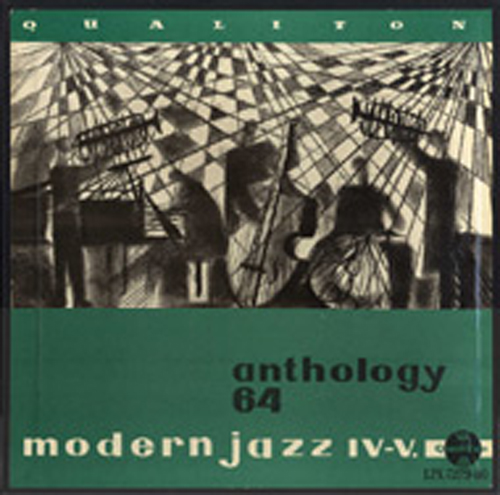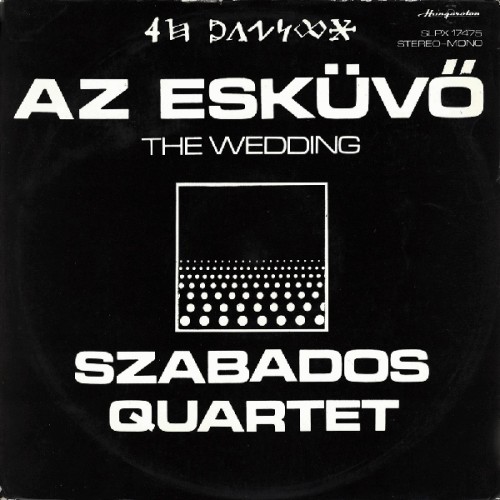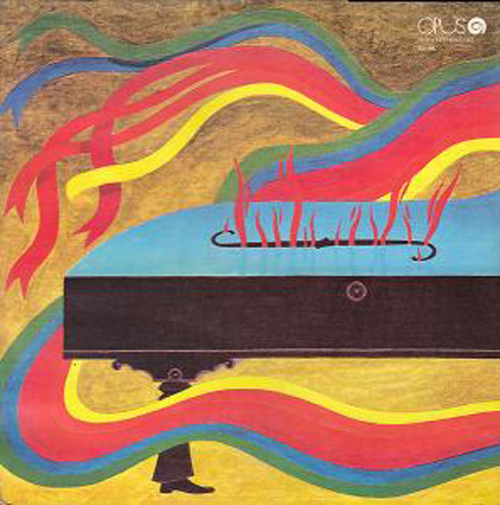LINER NOTES: 
LP Backside Text:
The four pieces included in this, recording reveal an original and peculiar musical realm. This music, being of a Central European conception and often unambiguously relying on the traditions of Hungarian folk music, is organically connected to the experiences and achievements of modern music and at the same time reflects a strong influences of progressive Black American jazz.
read more.... Already in 1962-63, György Szabados gave free jazz concerts in Budapest, which at that time created surprise but with their spontaneous emotional effect, the broad scale of musical means, their unusually complex harmonic and rhythmic realm and the intensified demand for expression, undeniably opened a new field in Hungarian jazz, and surprisingly, synchronized with the avant garde phenomena in international jazz. His conceptions burst open the framework of jazz forms and styles of the day. He instinctively built his musical idiom on the soil of the rubato type Hungarian folksong and the oriental asymmetric rhythm, so familiar from Bartók’s music – an idiom which revealed new dimensions of the genre and led to a strongly controlled, but free music playing of great impovisatory possibilities. This then completely new approach remained undeveloped primarily because the lack of response among other musicians. However, the spread of contemporary music among the young generation and the appearance of the so-called free style on the international scene, have proved Szabados right. His Quintet (Vilmos Javori, Laszlo Kimmel, Mihály Raduly, Sandor Vajda) has been awarded the Free Grand Prix of the International Jazz Competition in San Sebastien in 1972. His style incorporates folk music, modern music and avant garde jazz, forming a particular unity, and by this he escapes the oppressive fads of convention and epigonism. This music is linked to Bartók’s and Kodaly’s spirit, yet fitting with an animated and original savour into the circuit hallmarked by John Coltrane, Archie Shepp, Pharoah Sanders, Cecil Taylor or Keith Jarrett, and even though providing a medium for independent concepts in its content as well, it often shows a surprising musical kinship to the achievements of those mentioned above. The new quartet heard on this records, further elaborates this by now characteristic stylistic realm. The title-composition, The Wedding, essentially contains all those characteristics and achievements that are typical of the quartet. Throughout the piece runs the tense and timeless atmosphere of the wedding rhythm, an anguished-hopeful moment of past and future. The musical material is dominated by the passionate, broadly dynamic unity of the piano and the violin, and by the characteristically East European asymmetric rhythm which, with a proper feeling, is joined into a homogeneous fabric by the polyrhythmic improvisation on the drum to produce a new phenomenon in the realm of jazz. The playing of the double-bass draws to the school of Jimmy Garrison and Charlie Haden, but opening the piece in an individual tone and with such an inspiration that one is captivated from the first moment by the profundity and earnestness of its message. The composition is imbued with anguish and force, gloom and dancing joy, with the stubborn rhythm evoking, as it were, the invincibility of life. The Interrogation of Irma Szabo, reveals that the seemingly free improvisatory work is always elaborated by the ensemble as set into some kind of dramaturgically determined structural framework. In The Wedding this was based upon the scheme: Theme I – Theme II – Theme I/a, while here the basis is an individually treated, still living Transylvanian folksong – the ballad of the Questioning of Irma Szabo, an infanticidal mother – (Theme I + Theme I/a – Theme I/b), and this is expounded by the common improvisation, with a free and expressive passion. The impulse of the improvisation is particularly intensified by the violin, with its tone breaking out of torment, with the force of a confession and recalling Webern’s atonality, and its agonized, oriental double-stops. The Miracle offers a realistic and at the same time abstracted musical experience. During their tour of France the ensemble also were to Lourdes, the popular place of pilgrimage, whose atmosphere recalling the Transylvanian mountains, with the endless procession of people expecting miracles, and the pentatonic tune of the chiming of the bells, offered an agitating experience. The piano broadly unfolds a beautiful Hungarian folksong into a soaring peal of bells, displaying the beauties of the Hungarian rubato, and this peal of bells runs through the whole composition until its closing notes. The performance, Central European in all its gestures, at places is marked by Coltranean “tone curtains” but the second, “psalm like” theme and the following section is already a unique amalgamation of Hungarian musical thinking and a Keith Jarret-like improvisatory technique. The zither, currently enjoying a renaissance in Hungary, is used in the most profound section of the record, to enrich the composition, together with the properly adjustable double-bass. The piece brings a combination of instruments which is rather unfamiliar in jazz recordings, with its piano-violin improvisation that bears out the great invention, technical grounding and the routine in joint improvisation of the two instrumentalists. Technically the ten minutes of improvisation sounds as if they were playing composed music. Noted down it could become a gifted piece of contemporary music.




